Today I want to talk about therapeutic design. I was recently asked to cast a vision for a makeover of a therapeutic play room for children being served by AGAPE.
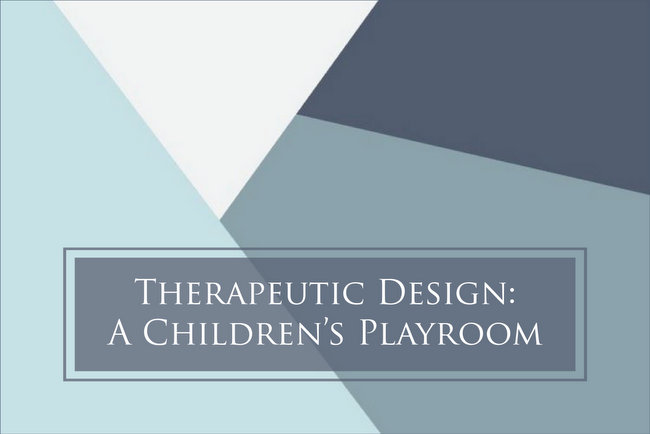
Some of you may remember the annual Bella Rustica barn sale that I supported and promoted in years past? That event was founded to help raise funds for AGAPE.
AGAPE is a non-profit agency that serves the needs of families and children in Middle Tennessee through adoption, foster care, unplanned pregnancy support services, and faith based counseling and psychological services with a focus on agape (Greek for transcendent, unconditional love). This year the agency will conduct over 12,000 counseling sessions in seventeen locations across the region, and at any given time will be serving fifteen to twenty families through adoption, foster care and maternity support.
Here are the pics I snapped when I first visited the intake and play room for AGAPE:
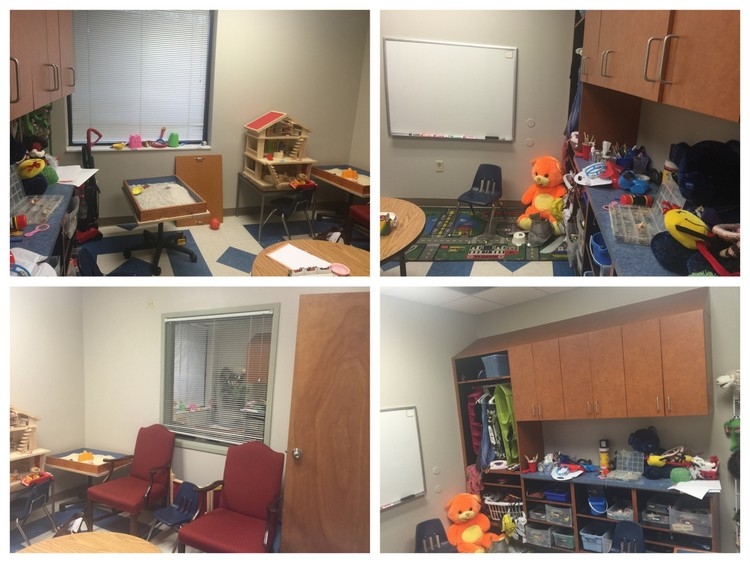 therapy room before
therapy room before
The room is quite small – only 10 feet by 11 feet – and is currently full of donated toys used for play therapy. Even though there are some cool toys in here, it isn’t exactly a welcoming or soothing space. The therapists see this room every day – sometimes looking at something familiar afresh through a photo makes it easier to see what it appears like to someone new to the space (e.g., the incoming children). This room is currently over-stimulating and disparate. An already anxious or sensory defensive child may be overwhelmed with the current space and the visual chaos here.
Since I spent a decade as a psychologist developing interventions for these kinds of children in the school system, I had more than a few ideas for this therapeutic design. The goal for this space is to create a calming, friendly environment for children who may have experienced trauma and abandonment and who may also have sensory and attentional issues.
Choosing a paint color that looks fresh, soothing, kid-friendly, and gender-neutral was first on my list for the small space. Paint color affects a visual environment more than any other design detail, because it’s within your visual field no matter where you are in a room or what direction you are facing. You can’t say that about a chair fabric or even a rug. If the paint color isn’t pleasing, the room design is a bust. This is particular the case in therapeutic design.
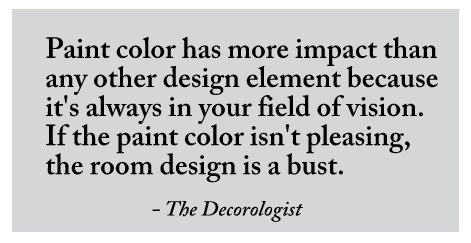
Benjamin Moore Smoke 2122-40 in an eggshell finish would be a good kick-start to lessen the institutional vibe in this room. I suggested painting both the walls and the ceiling the same color. A professional painter can spray the ceiling, rather than rolling it on. I’ve done this before on commercial drop ceilings, and it’s the best thing you can do to soften up the look of an office or institutional setting without replacing the entire ceiling.

The therapeutic design needed a flooring option that is low maintenance, cost effective, and stylish. These laminate planks have a textured oak finish that provides the look and feel of real hardwood. At $1.29 a square foot, the planks feature a beveled edge and easy locking installation. This kind of flooring absorbs sound better than hard wood or ceramic tile, which will help calm the auditory environment.
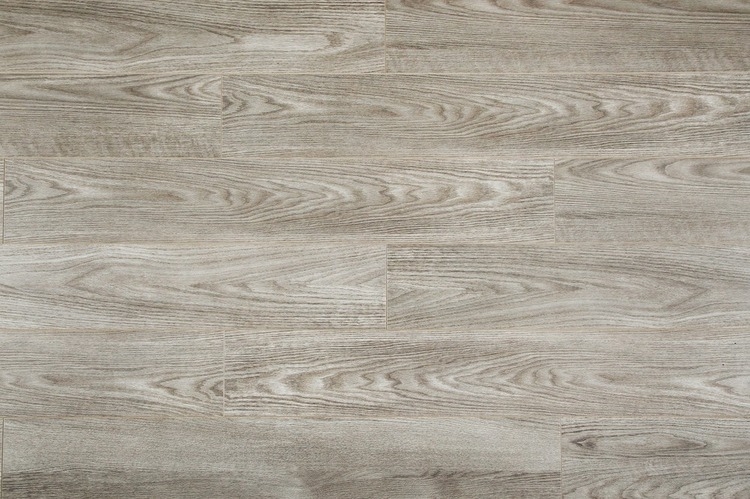
In order to visually calm down the small room, many of the toys should be stored behind cabinets. This IKEA unit features closed cabinets on the bottom which kids can easily access and open shelving for books and a few fun items to add interest and color.
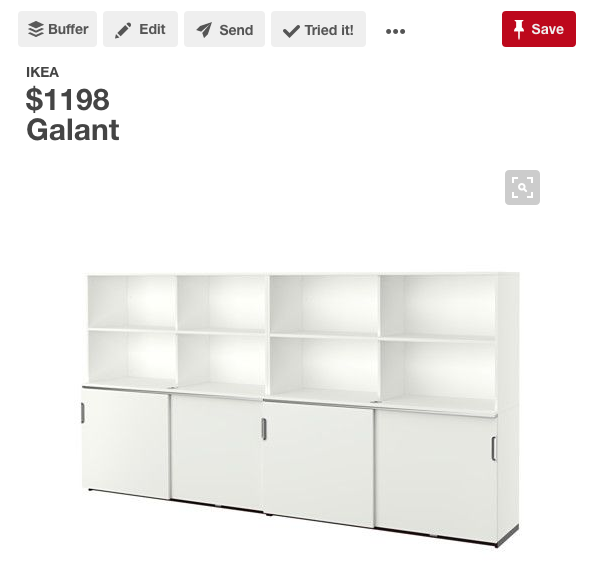
I love the sliding doors on these units – the one below offers all closed storage. Too many toys options at one time in this kind of therapy room can be really overwhelming and overstimulating for kids with sensory issues. Finding ways to decrease visual distractions is often a goal in therapeutic design.
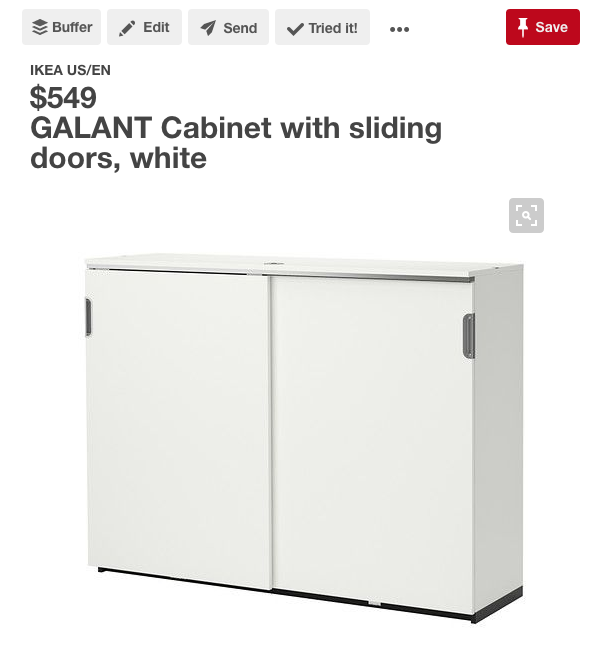
In such a small space, you might as well make the decor multi-functional if you can. That’s why I fell in love with this therapy rug from The Land of Nod – not only does it soften and brighten the space, but it’s also great for play therapy. It can be difficult for traumatized children to look adults in the eye when answering difficult questions. Children can run cars and boats over it and even build up little villages on its surface while going through intake interviews with child therapists.
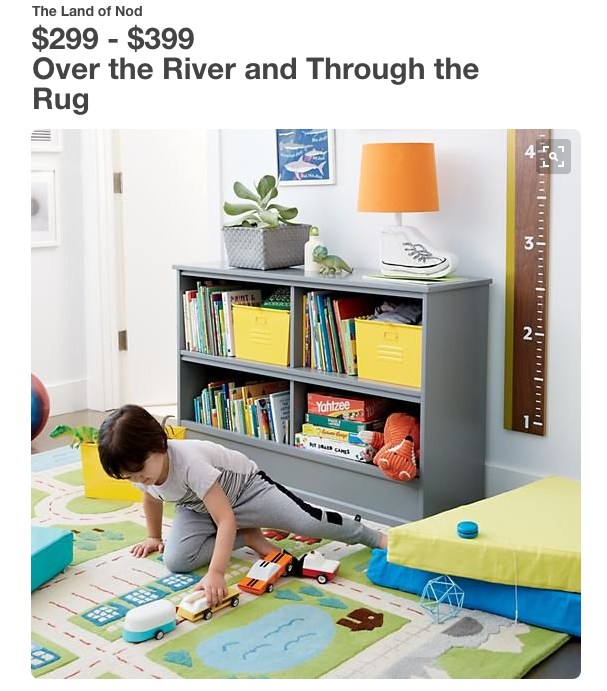
As part of the therapeutic design of this room, I suggested a thorough editing of existing toys/items. There is too much for a child to choose from in its current state. I recommended measuring the shelves in the cabinets and purchasing all white (not clear) bins to house like items, labeling them all clearly. I also suggested they commit to fewer “stations” that are most useful for their purposes. The sand and the rice table may be redundant – they could choose one and remove the other. Any new therapy toys or additions to the room should be less varied in color as to visually calm down the space, using the proposed color palette as a guide for that going forward.
They also need a table that can be pushed up against the wall or two-way mirror where kids can play a game or put together a puzzle with a therapist, or where they can easily be observed through the glass while playing or drawing. This set from IKEA is perfect – check out the color of the chairs!
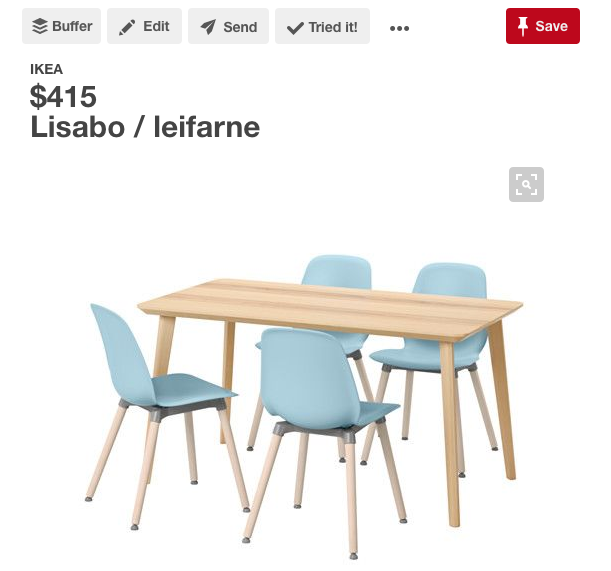
Bright curtains will soften both large window and the two-way mirror, and they will help absorb the harsh auditory echoes that are often an issue in spaces lacking soft goods and fabrics. When we were restoring our present home 16 years ago, I distinctly remember the auditory calming that occurred when we finally got rugs, window treatments, and upholstery in our home. Our one-year-old’s high pitched cry was easier to bear when soft furnishings finally relieved the echo effect that we experienced the first couple of months living there!
As the therapy play room began coming together in my mind’s eye, I decided to add a simple but playful element to the room’s design with a geometric wall treatment. The base of the walls will still be painted Benjamin Moore Smoke, but two other blues and a white will be added to the painted wall treatment. The ceiling will still be painted solid Smoke.

Below is the final concept board. I think this will be a wonderful therapy play room for the children that come through AGAPE’s program:
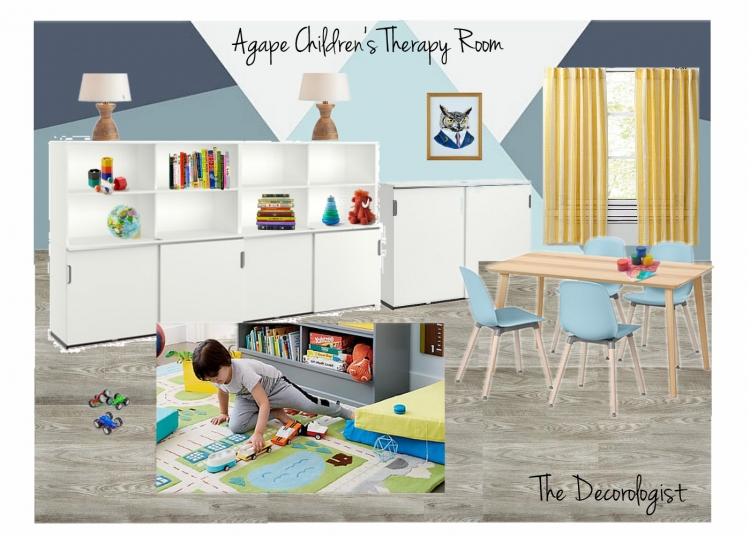 therapeutic design
therapeutic design
Color and design can be surprisingly therapeutic. Whether in a therapy play room for children with specific emotional or sensory needs, an assisted living facility for the elderly who can no longer stay in their homes, or the home of a newly widowed or divorced woman starting her life over on her own, creating environments that soothe and comfort can be a tremendous gift to the inhabitants of those spaces. How has color or design been therapeutic for you?

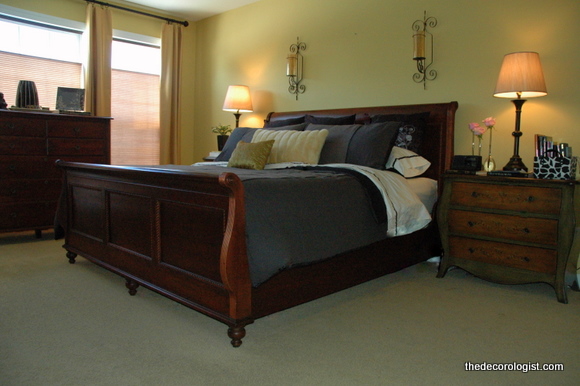
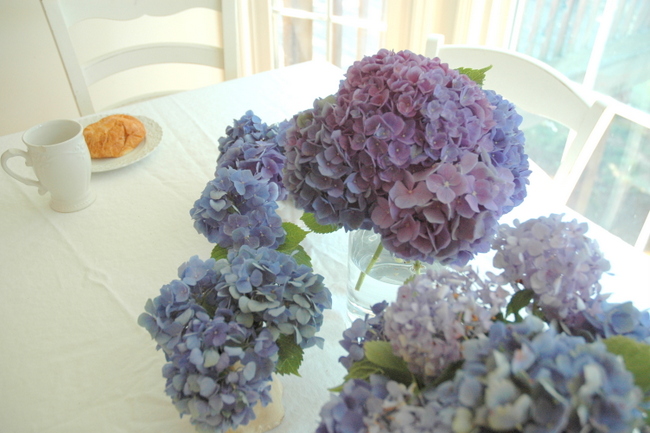
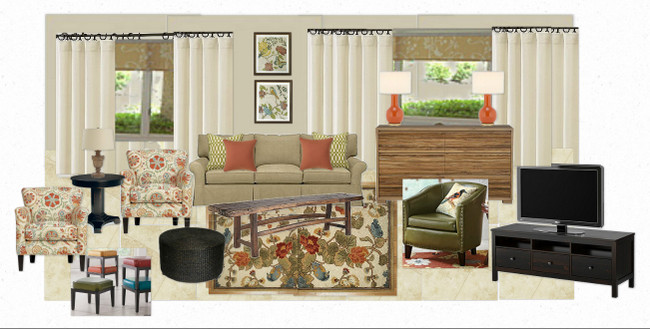
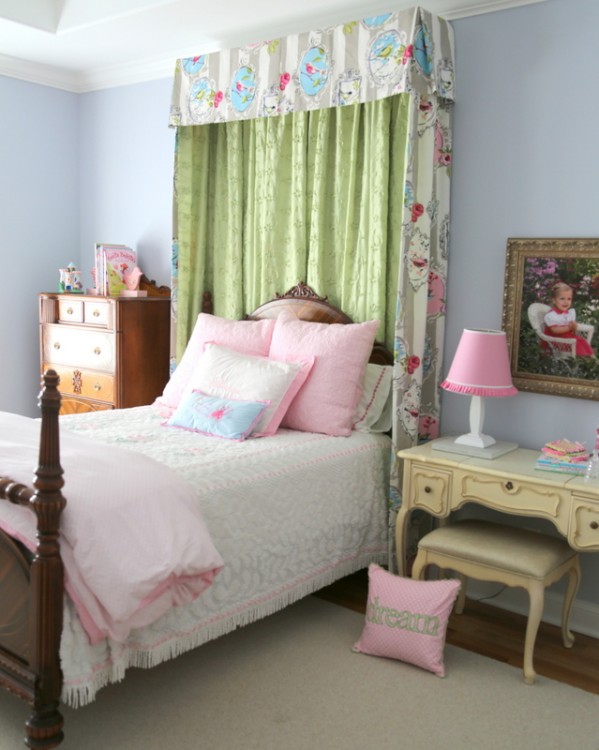
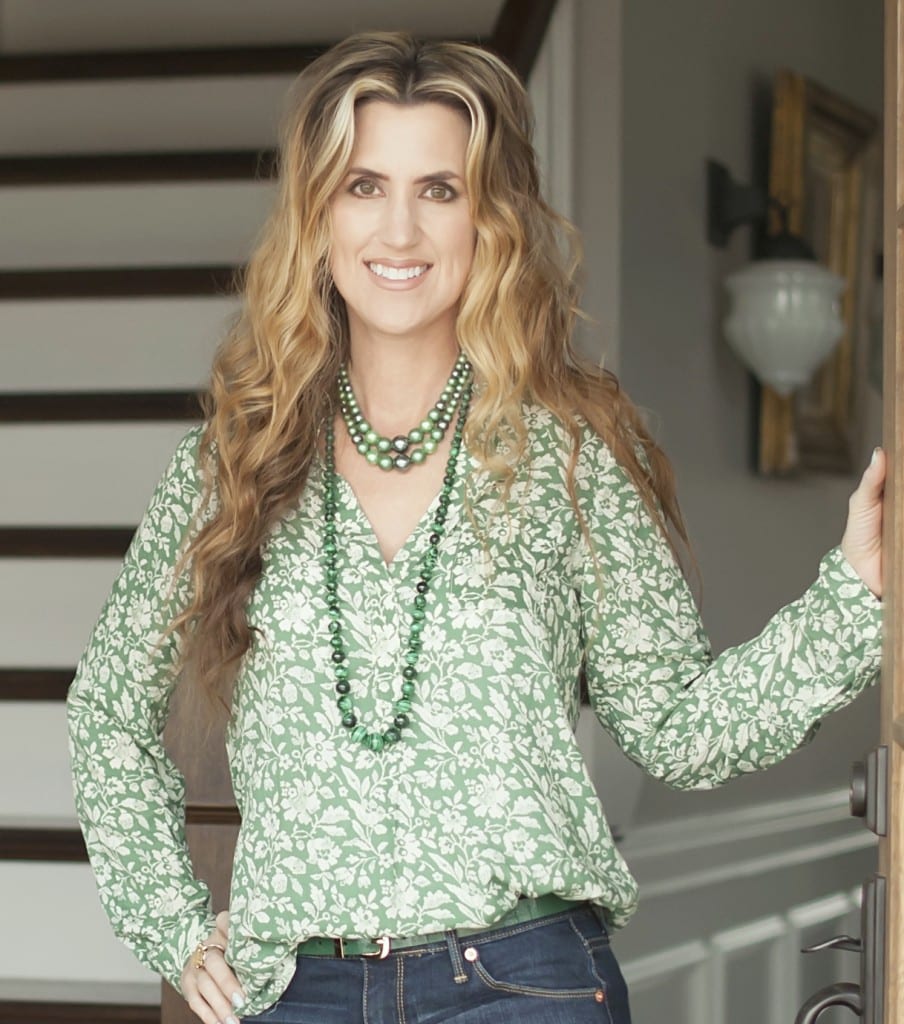

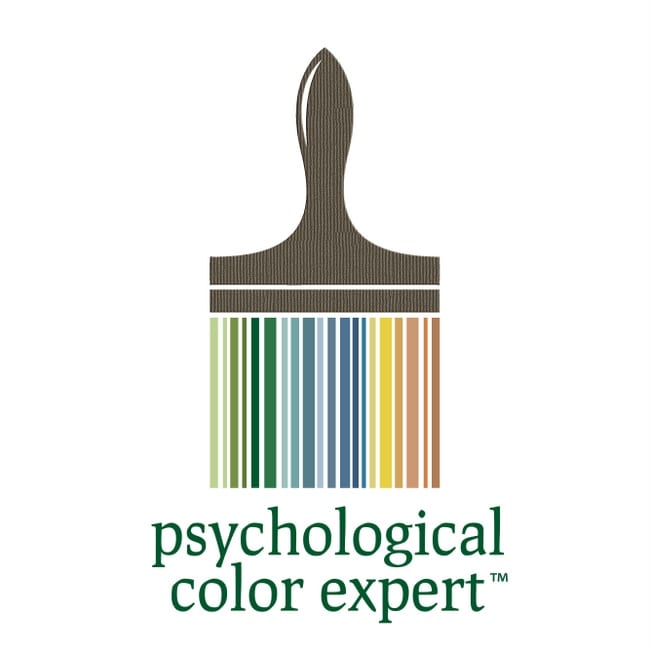

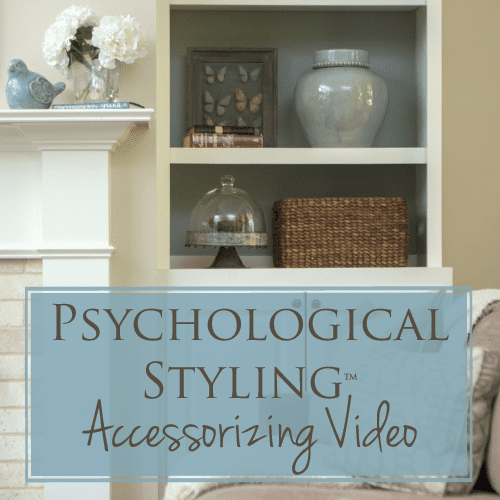
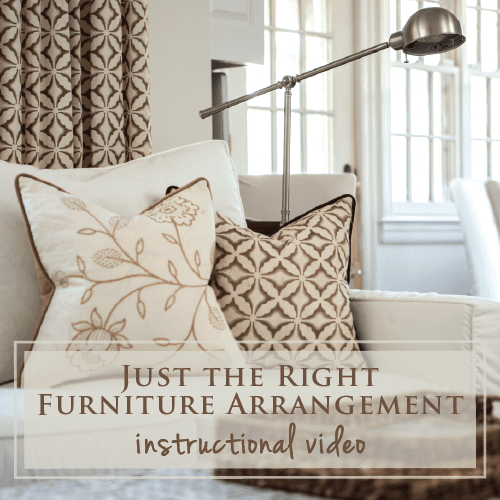

You did a wonderful job, Kristie. That design looks so much better, and more soothing than what they had before. I keep looking for information on design with autism in mind and there doesn’t seem to be much information out there.
Molly, thank you! Yeah, there’s not a lot of info out there. I try to focus on what the issues are – does a child have tactile sensitivities, auditory, visual? Then try to address those. I find that the right or wrong lighting can impact many people in a positive way. Fluorescent lighting is the worst. Thank you for reading and commenting 🙂
I love this design! Since we have a son with special needs, I especially appreciate how color and texture affects a room and the people in it. Thank you for your work in this area!
Thank you, Pat!
Thank you, Kristie, for sharing your expertise with AGAPE. I know your work is enormously valued by the organization. You are especially kind and thoughtful to work with AGAPE in this way.
Thank you so much, Lezlie! I hope it will be a good thing for both the children served there and the therapists who work with them.
A masterful design. Your unique experience informs the choices…it gives me hope, and I am earmarking the post toward when we put together a children’s area in our new Church building. Our kids will have to inhabit a “flex space” for the time-being (have you written many posts on flex-space or convertible rooms?), and all these choices would function beautifully – especially because, though we have kids who need all kinds of special considerations- from allergies to autism – the Church, however humble, is one place where everything ought to be in its right place! Order can be so welcoming. You have really given direction to this needful therapy room, and beauty – and probably a bit of unexpected hope to the people who labor there. Very inspiring.
Thank you so much, Sunny! I hope it gives you some ideas you can use in your church. Several years ago, I converted an old conference room into a library/prayer room in my church. It went from being cold and institutional to one of the most calming, peaceful places where many people would take refuge in during times of distress, grief, and prayer.
Love the redesign – my son is ADHD & his room is Smoke so it’s a great calming color. Our moms club just worked on repainting, furnishing, clearing out, etc. the foster care/adoption visitation room where we live. It actually LOOKS like a place you would want to spend time now!
Michelle,
That’s wonderful that you recently redid a room like this, too! I’m sure the kids can feel the difference 🙂
Lovely!
Thanks so much, Elayne!
Thank you for the post! My daughter works inner city special needs school where the school can not even afford instruments for her to teach music . Most monies spent comes out of her personal income, of which h half already goes to a daycare so she can work, not leaving much left from her $40K/year income. She actually used plastic cups as instruments for her Christmas program. The ideas you impart are a huge blessing as we are constantly seeking ways to pinch a penny and still meet the special needs of her students! Thank you for all your hard work!
Oh wow, thanks Syl! I hope you can use some of the ideas to help. I’m sure your daughter is a great teacher and a blessing to her students!
Great ideas for that moment in their young lives that provides order, calm, and fun. How blessed they are to have a soothing space at a turbulent time. Great design for the healing process.
Thank you, Julie! I’m looking forward to seeing if the therapists notice a difference in the children’s experiences there.
I love that you are using all your gifts and talents to help AGAPE. The room is going to be exponentially better when it is all finished! We are just starting to understand that our 8-year-old son has some sensory issues. After reading this post, I’m thinking the room he shares with his 12-year-old brother is not a soothing environment for him (I’m thinking it’s the opposite). Their 10.5′ x 11′ room has had to serve as both bedroom and playroom since our 3rd son was born (he’s almost 2), and it is just really cluttered and messy all the time. I can’t bring myself to go in there some days, so I’m sure it’s just awful for my 8-year-old who is easily frustrated. 🙁 I’ve tried to do some decluttering and organizing, but it is so difficult to get him to let go of anything. I don’t want to get rid of things without him knowing as that seems cruel (and I read somewhere that it gives kids the sense that they’re losing control of their environment, which in turn causes them to want to hold on to their stuff even more). So, I’m at a loss. Do you have any tips?
Jenny,
The issue of getting rid of things without them knowing is an emotionally-charged one, for sure. The problem is this: very few kids (with sensory issues or not) ever want to get rid of ANYTHING. That’s certainly the case with my kids – they would never voluntarily get rid of anything. Sometimes it helps to have a cause you are giving their extra toys to – so they understand that there are kids less fortunate than they are that may need some of the “extras.” That can help spark a bit of empathy that helps them choose to give up a few things. BUT, with my youngest, I sometimes have to go cull through her room when she isn’t there and get rid of some things that are not obviously important to her – just to keep things somewhat under control. Art projects are the worst – she wants to keep them all. So I let her keep them about 6 months, then I take photos of them so she can remember them, then they go away (unless they are really, really special). It’s helpful to keep number limits on things, like only 3 of your favorite art projects. Or no more stuffed animals than what fits in this large basket. I really do think it’s an important skill to teach kids – how to let “things” go, how to keep their rooms (and life) somewhat organized, how to give things away to others in need, how to make decisions between this vs. that. But it’s a tough task that takes a lot of hand-holding, prodding, and frankly – sometimes things just “disappear” in all the clutter . . .
Love what you have come up with for this space. Blue is said to be the best color for it’s myriad of positive mental affects. It is also such a fun color it reduces the need for any wall home decor, which helps to create the calming vibes you’re going for. The ikea shelves you chose are also great, you can keep toys tucked away in the drawers and in baskets in the open shelves.
Thanks, Charlotte! I’m glad you like it 🙂